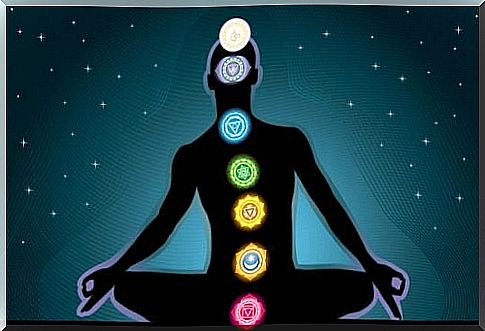7 Different Forms Of Meditation And Their Benefits

Stress, anxiety, and difficulty controlling emotions are just some of the reasons people seek to try meditation. In this article, we present seven different forms of meditation and the benefits they bring to well-being.
When talking about meditation, the image of an enlightened monk sitting in a lotus position often comes to mind, but meditation can be practiced in many different ways and for many different reasons. There are also different forms of meditation that you should be aware of: this way you can try the form of meditation that works best for you.
On a secular level, meditation is practiced to achieve refreshment, joy, and relaxation. On a spiritual level, meditation can be practiced, for example, to be free from suffering and to resolve existential issues.
In this article, you will find a comprehensive package of information on the different forms of meditation, what benefits are associated with them, and what situations they are best suited for.
Different forms of meditation
1. Sound meditation

Sound meditation is based on mantras. But what is the mantra?
A mantra is a sound, word, or phrase that is constantly repeated and that results in the vibration of the mind. One well-known mantra is the utterance of the word om. By focusing on a word, mantra, object, or sentence, the meditator is able to clear his mind and leave the present moment.
The mantra is not a randomly chosen voice or phrase, but is based on sacred voices and thoughts whose purpose is based on doctrines formed millennia ago.
Voice meditation helps you to make room between yourself and the mental noise that prevents you from calming down.
2. Vipassana meditation

The purpose of Vipassana meditation is to develop inner wisdom, and it comes from the Buddhist tradition of meditation. Vipassana meditation focuses on breathing through the nose and recognizing feelings and thoughts without judging or interpreting. Emotions and thoughts flow freely, but you don’t grab them, you let them pass through your mind intact.
Vipassana meditation helps you see things as they are without further interpretation. It opens your eyes and helps you understand what is going on around you.
3. Zazen meditation
Zazen meditation, also known as Zen meditation, focuses on breathing. There is a big difference between Zen meditation and Vipassana meditation, as Zen is not based on nasal breathing but deep abdominal breathing.
During Zen meditation, you should sit as straight as possible, with your chin facing your chest and your hands on your stomach. This allows you to observe the fall and rise of your diaphragm and focus on deep breathing.
Zen meditation helps you to notice thoughts moving through your mind that you observe as from a stranger’s perspective and that you let go of.
4. Metta meditation

Metta meditation is based on Tibetan Buddhism, known for its arousal feelings of love, acceptance, and kindness. Metta is a form of meditation that cares about and develops compassion for others.
During metta meditation, you learn to be merciful to others and to be more positive about life. In addition, you will learn to accept yourself and your loved ones exactly as they are.
People with low self-confidence, perfectionists, and self-critical people can benefit a lot from meta-meditation.
5. Kundalini meditation
The goal of the Kundalini is to awaken the mind, and this is achieved through mantras that open the way to the subconscious. Kundalini focuses especially on awakening the spine, as Kundalini’s energy is found in the lower back.
When you play mantras or songs, you release the energy lurking in your spine and wake up to a new reality. If you push yourself further, you can achieve enlightenment.
6. Chakra meditation

According to Hinduism, man has six chakras. Chakras are sources of energy in the body and their energy can be accessed through meditation and conscious practice.
Chakra meditation focuses on sounds, hand postures, visual exercises, and every chakra awakening that will help you take care of your physical body.
7. Tonglen meditation
Tonglen meditation will help you understand the things that are causing you suffering, accept the pain, and get rid of it.
This meditation can be suitable for people who easily get away from anything negative or scary, or try by all means to prevent taking risks and possible pain and distress. Tonglen meditation will help you understand that pain cannot be avoided, but that it can be treated constructively and released.
Tonglen meditation helps you let go of negativity, and makes you more compassionate and empathetic. Tonglen meditation largely focuses on breathing.
Have you tried these different forms of meditation? Each of these methods brings positive effects, but they focus on slightly different areas. You can choose the form of meditation that works best for you and feel the benefits it brings to your life.
If you find it difficult to start practicing meditation, you can start with just a few minutes a day. Take a comfortable position while sitting on the floor or lying down, close your eyes and focus on breathing deeply. Just focus on being and clearing your mind: when thoughts or feelings appear, don’t grab them but let them fly through your mind. You can increase the length of your meditation moments once you are used to the exercises.









